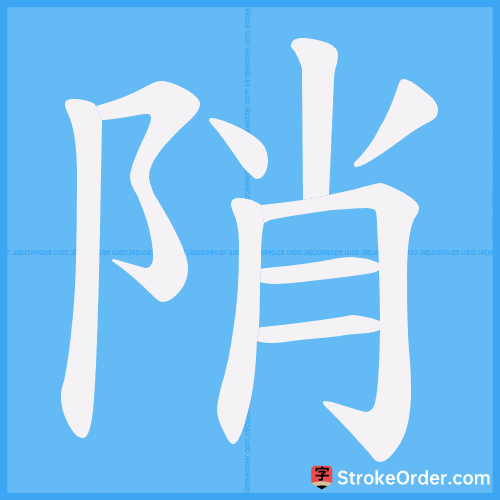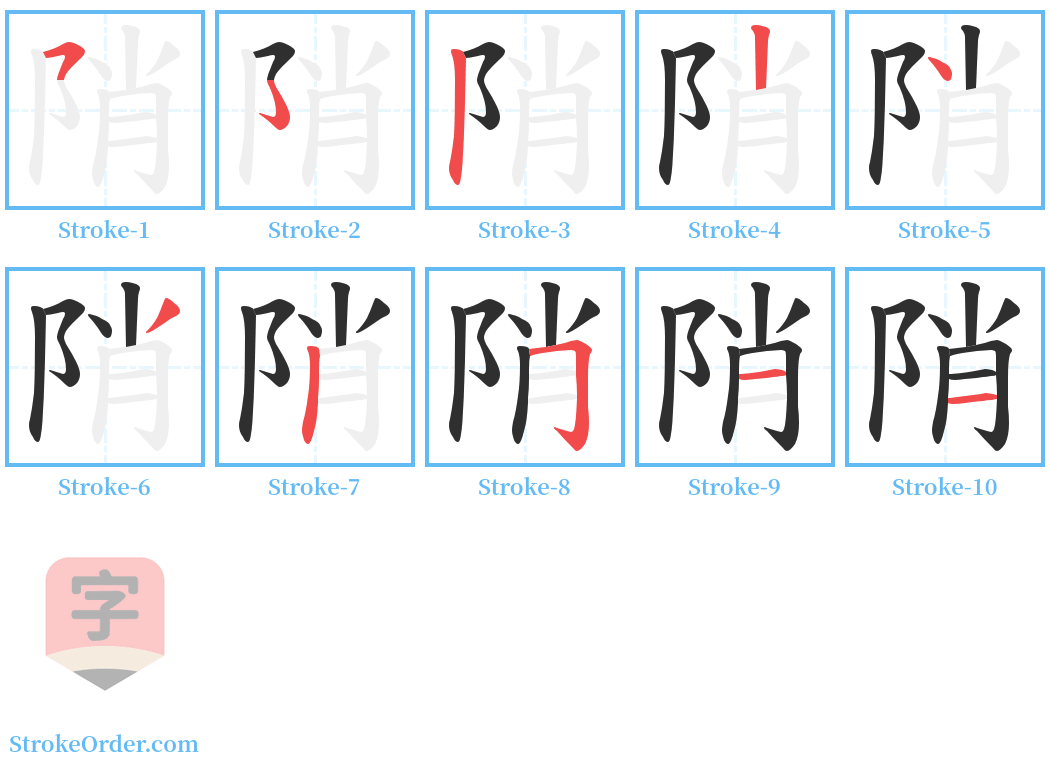陗 Stroke Order
Animated Stroke Order of 陗

Stroke Order Diagrams for 陗

Information of 陗
Pinyin
qiào
Radical
阝
Strokes
9 strokes
Usage
★★
Definition
陗 (pǔ)
1. Same as "峭". Steep and lofty. In the "Shuowen Jiezi", it states: "陗, 陖." Duan Yucai explains: "Anything that is steep and direct is called 陗." Wang Yun reads: "陗, in 'Tongsu Wen': 'Ridges and slopes are called 峭.' Steep mountain ridges are also called 峭." In "Guangya", it says: "陗, high." In "Yupian", it states: "陗, dangerous." In "Chuci, Jiu Zhang, Beihui Feng": "Above the steep cliffs, I dwell on the peak of the female bird." Old commentary: "峭, sometimes written as 陗." In "Records of the Grand Historian, Biography of Li Si": "The difficult limit of five Zhang, can one be crippled and say a hundred Ren is easy? The situation of 陗 trench is different." Sima Zhen notes: "陗, steep and high." In the "Great Tang Records on the Western Regions", it states: "To the southwest of the monastery, there is a deep ravine that ends steeply, with waterfalls flowing down." In Qing, Yang Fengbao notes: "The cave has a stone path; the back mountain's two cliffs are steep."
2. Severe and narrow. In "Guangya", it states: "陗, urgent." Qian Dazhao comments: "陗 is from Wang Bao's 'Four Sons Discussing Virtue': 'The prime minister is harsh and profound. The legal principles are harsh.'" Li Shan's commentary cites "Guangya": "峭, urgent." The term can also be written as 峭. In "Han Shu, Biography of Zhao Cuo": "Cuo was a person who was 陗 and stern." Yan Shigu notes: "The character 陗 is the same as 峭. 峭 means steep and profound."
3. Hidden. In "Yupian", it states: "陖, hidden."